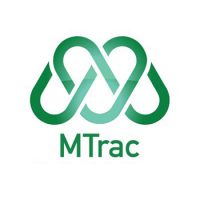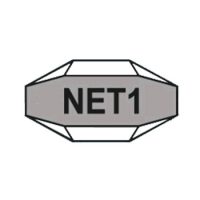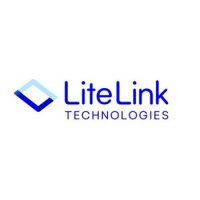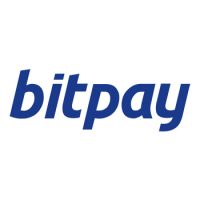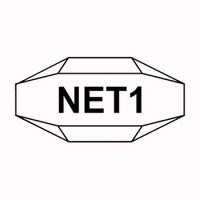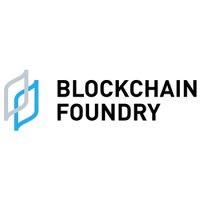Blockchain Press Releases
Sales Performance Management Market worth $4.4 billion by 2028 – Exclusive Report by MarketsandMarkets™
CHICAGO, July 3, 2023 /PRNewswire/ — Sales enablement and coaching, improved analytics and visualisation, mobile and remote capabilities, integration with CRM and the sales tech stack are key components of the Sales Performance Management (SPM) market’s future growth. In order to improve sales performance and decision-making, user adoption and experience will be emphasised.
The Sales Performance Management Market size is expected to grow from USD 2.3 billion in 2023 to USD 4.4 billion by 2028 at a Compound Annual Growth Rate (CAGR) of 13.6% during the forecast period, according to a new report by MarketsandMarkets™. The rising demand for metric-driven sales tools has driven market growth.
Browse in-depth TOC on “Sales Performance Management Market“
196 – Tables
48 – Figures
228 – Pages
Download PDF Brochure @ https://www.marketsandmarkets.com/pdfdownloadNew.asp?id=252216710
Scope of the Report
|
Report Metrics |
Details |
|
Market size available for years |
2019–2028 |
|
Base year considered |
2022 |
|
Forecast period |
2023–2028 |
|
Forecast units |
Million/Billion(USD) |
|
Segments Covered |
Component (Solutions, Services), Organization Size, Deployment Mode, and Vertical |
|
Geographies Covered |
North America, Europe, Asia Pacific, Middle East & Africa, and Latin America |
|
Companies Covered |
Some of the major vendors offering SPM across the globe include SAP (Germany), Oracle (US), NICE (Israel), Anaplan (US), Xactly (US), Salesforce (US), Varicent (Canada), Optymyze (UK), beqom (Switzerland), Performio (US), Incentives Solutions (Israel), and more. |
Software segment to capture a large market share during the forecast period
The SPM market, by component, includes solutions and services. The solutions segment is projected to lead the market. SPM solutions optimize and enhance sales processes, improve performance, and drive revenue growth. There are different types of SPM solutions, including ICM, territory management, sales planning and monitoring, sales performance analytics and reporting, and others (sales coaching and gamification). The emerging technologies, such as AI, ML, and advanced analytics, and the integration capabilities of SPM solutions with various business platforms, such as ERP, CRM, and HCM platforms, have facilitated the streamlining of SPM processes and better management of sales representatives’ performance.
Integration & Implementation service segment to capture a second largest market share during the forecast period
Integration & implementation services focus on assisting organizations with seamlessly integrating SPM solutions into their existing sales infrastructure and ensuring a successful implementation process. These services encompass various activities to ensure a smooth transition and optimal utilization of the SPM solution. Service providers analyze the organization’s sales ecosystem, including existing systems, processes, and data flows. They assess the compatibility of the SPM solution with the organization’s infrastructure and business requirements.
Request Sample Pages @ https://www.marketsandmarkets.com/requestsampleNew.asp?id=252216710
North America segment to capture a large market share during the forecast period
The SPM market has been segmented by region into North America, Europe, Asia Pacific, the Middle East and Africa, and Latin America. As per region, North America is estimated to account for the largest market share in the global SPM market in 2023, and this trend is expected to continue during the forecast period. North America is the region with the most established SPM adoption due to several factors, including the existence of large enterprises with sophisticated IT infrastructure and the availability of technical expertise. North America’s two most significant contributors to the SPM market are the US and Canada. The trend is expected to persist during the forecasting period. It is a region with strict regulations for several economic sectors and advanced technology. Companies in North America prioritize optimizing their sales processes and driving revenue growth. SPM solutions provide the necessary tools and capabilities to enhance sales performance, improve efficiency, and maximize revenue potential. As a result, organizations across various industries actively seek SPM solutions to gain a competitive edge. North America is known for its technological advancements and early adoption of innovative solutions. SPM vendors in the region leverage emerging technologies such as artificial intelligence (AI), machine learning (ML), and data analytics to offer sophisticated SPM platforms.
Top Key Companies in Sales Performance Management Market:
Some of the major vendors offering SPM solutions and services across the globe are SAP (Germany), Oracle (US), NICE (Israel), Anaplan (US), Xactly (US), Salesforce (US), Varicent (Canada), Optymyze (UK), beqom (Switzerland), Performio (US), Incentives Solutions (Israel), Axtria (US), Iconixx (US), Gryphon Networks (US), ZS (US), CellarStone (US), Board (Switzerland), Zoho (India), InsideSales (US), Accent Technologies (US), Silvon Software (US), CaptivateIQ (US), Spiff (US), Ascent Cloud (Switzerland), Adventace (US), Plecto (Denmark), Spotio (US), SalesScreen (Norway), Centrical (US), Spinify (US), Ambition (US), Everstage (India), and InnoVyne (US).
Recent Developments:
- In March 2023, Salesforce announced new product suites for sales and service teams, bringing together solutions from across the Customer 360 to help any company unlock cost savings and create exceptional customer experiences.
- In February 2023, Performio launched its new product, Analytics Studio. The new analytics capabilities leverage predictive artificial intelligence (AI) to generate insights into payable and attainment trends by team, territory, or products, which informs and improves territory, quota, and comp recommendations. In addition, it reports on estimated compensation payables based on the current pipeline in a customer’s CRM system to better plan and manage company-wide commission payouts.
- In June 2022, Beqom opened an office in Tokyo as part of its ongoing Asia-Pacific expansion, naming industry veteran John Kirch as Head of Sales in Japan. The move follows Beqom’s recent announcement of global expansion plans fueled by a $300 million investment by Sumeru Equity Partners.
- In April 2022, Xactly announced the addition of Commission Earnings Forecasting to the Xactly Intelligent Revenue Platform. This solution eliminates lengthy manual processes and reduces financial risk related to unexpected commission expenses.
- In March 2022, Xactly announced the Xcelerate Partner Program, focusing on best-in-class enterprise software partners and systems integrators to support customer revenue growth.
- In August 2021, Varicent acquired Concert Finance (Concert), an innovative provider of commission software designed by compensation experts. The move to acquire Concert Finance started in May when Concert sought to scale its rapid growth. Varicent wanted to expand its Incentive Compensation Management (ICM) portfolio into the SMB market. The deal closed on July 9, 2021.
Inquiry Before Buying @ https://www.marketsandmarkets.com/Enquiry_Before_BuyingNew.asp?id=252216710
Sales Performance Management Market Advantages:
- SPM solutions offer complete tools and functions to support sales teams in operating at their peak efficiency. They provide sales managers with real-time visibility into sales performance indicators, enabling them to spot problem areas and take preventative action. SPM solutions contribute to improved overall sales performance by coordinating sales efforts with company goals.
- SPM solutions give businesses the ability to match team and individual goals with sales targets. This keeps sales personnel motivated and focused on attaining goals that advance the strategic objectives of the business. SPM solutions’ incentive pay management tools assist in creating and implementing motivating compensation schemes that reward top performers and increase sales output.
- Advanced forecasting capabilities offered by SPM solutions enable organisations to estimate sales performance and revenue outcomes with accuracy. Sales executives are more equipped to make wise judgements and modify their plans when they have access to historical data, market trends, and real-time insights. This improves the efficiency of resource allocation, revenue forecasting, and sales planning.
- SPM systems come with tools for efficient quota and territory management. Based on variables including location, customer segments, and product lines, they assist in defining and allocating sales territory. Organisations may ensure a fair distribution of sales targets and boost the effectiveness of their sales teams by defining realistic quotas and tracking progress against them.
- SPM solutions offer strong analytics and reporting capabilities that give useful information about how well sales are performing. Organisations can spot patterns, opportunities, and bottlenecks by analysing sales data. The capacity to track key performance indicators (KPIs) at different levels, from individual sales agents to the entire sales organisation, is made possible by this.
- Effective sales coaching and training programmes are facilitated by SPM solutions. They offer resources to evaluate sales representatives’ performance, spot skill gaps, and conduct customised training. SPM solutions assist sales teams improve their capabilities and provide greater results by enabling continuous learning and development.
- SPM solutions simplify sales procedures while cutting down on administrative costs. Organisations can reduce human error, gain time, and boost operational effectiveness by automating processes including commission calculations, incentive plan administration, and data management.
- SPM solutions are built to scale as organisations expand and change along with the market. They can support growing sales teams, fresh product offerings, and changing sales tactics. To ensure smooth data flow and interoperability, SPM solutions also link with other business systems, such as CRM platforms.
Report Objectives
- To define, describe, and forecast the global SPM market based on components (solutions and services), deployment mode, organization size, verticals, and regions
- To forecast the market size of the five major regional segments: North America, Europe, Asia Pacific, Middle East & Africa, and Latin America
- To strategically analyze the market subsegments with respect to individual growth trends, prospects, and contributions to the total market
- To provide detailed information related to the major factors influencing the growth of the market (drivers, restraints, opportunities, and challenges)
- To strategically analyze macro and micromarkets1 with respect to growth trends, prospects, and their contributions to the overall market
- To analyze industry trends, patents and innovations, and pricing data related to the SPM market
- To analyze the opportunities in the market for stakeholders and provide details of the competitive landscape for major players
- To profile key players in the market and comprehensively analyze their market share/ranking and core competencies.
- To track and analyze competitive developments, such as mergers and acquisitions, new product developments, and partnerships and collaborations in the market
Browse Adjacent Markets: Software and Services Market Research Reports & Consulting
Related Reports:
Privacy Management Software Market – Global Forecast to 2028
Fintech as a Service (FaaS) Market – Global Forecast to 2028
Loyalty Management Market – Global Forecast to 2028
Enterprise Video Market– Global Forecast to 2027
Application Modernization Services Market – Global Forecast to 2027
About MarketsandMarkets™
MarketsandMarkets™ is a blue ocean alternative in growth consulting and program management, leveraging a man-machine offering to drive supernormal growth for progressive organizations in the B2B space. We have the widest lens on emerging technologies, making us proficient in co-creating supernormal growth for clients.
The B2B economy is witnessing the emergence of $25 trillion of new revenue streams that are substituting existing revenue streams in this decade alone. We work with clients on growth programs, helping them monetize this $25 trillion opportunity through our service lines – TAM Expansion, Go-to-Market (GTM) Strategy to Execution, Market Share Gain, Account Enablement, and Thought Leadership Marketing.
Built on the ‘GIVE Growth’ principle, we work with several Forbes Global 2000 B2B companies – helping them stay relevant in a disruptive ecosystem. Our insights and strategies are molded by our industry experts, cutting-edge AI-powered Market Intelligence Cloud, and years of research. The KnowledgeStore™ (our Market Intelligence Cloud) integrates our research, facilitates an analysis of interconnections through a set of applications, helping clients look at the entire ecosystem and understand the revenue shifts happening in their industry.
To find out more, visit www.MarketsandMarkets™.com or follow us on Twitter, LinkedIn and Facebook.
Contact:
Mr. Aashish Mehra
MarketsandMarkets™ INC.
630 Dundee Road
Suite 430
Northbrook, IL 60062
USA: +1-888-600-6441
Email: [email protected]
Research Insight: https://www.marketsandmarkets.com/ResearchInsight/sales-performance-management-market.asp
Visit Our Website: https://www.marketsandmarkets.com/
Content Source: https://www.marketsandmarkets.com/PressReleases/sales-performance-management.asp
Logo: https://mma.prnewswire.com/media/660509/MarketsandMarkets_Logo.jpg
View original content:https://www.prnewswire.co.uk/news-releases/sales-performance-management-market-worth-4-4-billion-by-2028—exclusive-report-by-marketsandmarkets-301868711.html

Blockchain
Blocks & Headlines: Today in Blockchain – May 9, 2025 | Robinhood, Solana, Tether, China, Women in Web3

Today’s blockchain landscape pulses with innovation, expansion and strategic jockeying. From established trading platforms laying the groundwork for international tokenized US asset markets to fresh efforts empowering women in Web3, the industry is evolving at frantic pace. Solana-based tokenization pathways, China’s state-driven blockchain masterplan and Tether’s push onto new Layer-1 rails further underscore diversification. In this daily op-ed, we unpack five major developments—examining what they mean for DeFi growth, NFT marketplaces, regulatory contours and the ongoing quest for greater inclusivity in crypto.
1. Robinhood’s European Blockchain Trading Ambitions
News Summary
Robinhood Markets Inc. is reportedly constructing its own blockchain infrastructure to facilitate trading of U.S. equities and other assets in European markets. Insiders suggest the project seeks to leverage distributed-ledger technology for settlement efficiency, near-real-time clearing and reduced reliance on legacy central counterparties. The move signals Robinhood’s ambition to transcend its domestic brokerage roots and capture European retail and institutional order flow.
Key Details
-
Infrastructure Build: A private, permissioned ledger governed by Robinhood and selected counterparties.
-
Asset Scope: U.S. equities, ETFs and potentially tokenized debt instruments.
-
Regulatory Interface: Engagements with the U.K. Financial Conduct Authority (FCA) and European Securities and Markets Authority (ESMA) to align on custody and market-making rules.
-
Timeline: Internal pilots slated for Q4 2025, with public rollout in mid-2026.
Analysis & Opinion
Robinhood’s pivot underscores a broader industry trend: exchanges and brokerages striving to “own the rails” rather than simply interface with existing clearinghouses. By internalizing settlement on a bespoke blockchain, Robinhood hopes to slash settlement times from T+2 to near-instant, a boon for liquidity providers and high-frequency traders. However, risks include the complexity of cross-border regulatory compliance and the operational challenge of maintaining robust on-chain and off-chain reconciliations.
From a DeFi convergence standpoint, Robinhood’s ledger could bridge traditional and decentralized finance, enabling tokenized margin lending and programmable corporate actions directly on-chain. Should Robinhood open permission to DeFi protocols, we may witness new hybrid liquidity pools that blend CEX order books with AMM liquidity. This would mark a milestone in mainstream DeFi adoption—and potentially pressure incumbents like Nasdaq to innovate their own on-chain settlement layers.
Source: Bloomberg
2. Women in Web3: Cultivating Greater Gender Diversity
News Summary
A recent deep-dive from Cointelegraph spotlights the persistent gender gap in blockchain and crypto. Despite Web3’s ethos of decentralization, women represent less than 20 percent of crypto investors and under 10 percent of core development teams. The article outlines initiatives—from targeted grants and incubation programs to mentorship networks—aimed at lowering barriers and attracting more female talent.
Key Details
-
Current Statistics: Women account for approximately 17 percent of crypto traders globally; in development, the share dips below 8 percent.
-
Notable Initiatives:
-
Women in Blockchain Fund: USD 50 million allocated for early-stage female founders.
-
Global Web3 Sisters Network: Mentorship platform pairing novices with veteran executives.
-
University Partnerships: Scholarships for women studying blockchain engineering and cryptography.
-
Analysis & Opinion
Web3’s promise of equal-opportunity innovation rings hollow if half the population remains sidelined. Heightened grant funding and mentorship can help, but systemic change requires cultural shifts within DAOs, core teams and investor circles. Projects and protocols must adopt policies—like blind code reviews, diversity hiring quotas and inclusive governance frameworks—to ensure sustainable participation.
Moreover, as the industry grapples with regulatory scrutiny, diverse leadership can foster better risk management and community trust. Women leaders have often been at the forefront of compliance, ethics and consumer protection—even in traditional finance—qualities sorely needed in crypto’s maturing phase. Token projects that embed gender-diverse advisory boards may see stronger reputational profiles and wider community buy-in.
Source: Cointelegraph
3. SOL Strategies: Tokenizing Shares on Solana
News Summary
SOL Strategies, a financial-services startup, is exploring a pathway to tokenize private and publicly traded shares on the Solana blockchain. Their recently filed whitepaper proposes a framework where equity is represented as SPL tokens, enabling fractional ownership, 24/7 trading and programmable dividend distributions.
Key Details
-
Token Standard: Extension of Solana Program Library (SPL) with “Equity Token” schema.
-
Custody Model: Licensed custodian holds underlying shares; token holders have legal claim via smart-contract link.
-
Compliance Layer: On-chain KYC/AML middleware to restrict token transfers to approved wallets.
-
Pilot Partners: Early engagements with two mid-cap European tech firms eyeing capital-raising via tokenization.
Analysis & Opinion
Tokenized equity stands to revolutionize capital markets by lowering minimum investment thresholds and unlocking global liquidity. On Solana, with its sub-second finality and low fees, fractional shares could trade seamlessly—outpacing Ethereum’s scalability challenges. Yet the critical hurdle lies in regulatory acceptance: will securities regulators view these tokens as bona fide equity or as unregistered securities?
SOL Strategies’ integrated custody approach could mollify regulators, replicating existing T+2 standards while enabling T+0 settlement on-chain. Should they secure regulatory sandbox approvals in the U.K. or Singapore, other blockchains—like Stellar and Polkadot—may race to develop similar tokenization toolkits. For DeFi protocols, tokenized equities could become collateral in lending pools, further intertwining traditional and decentralized finance.
Source: Newsfile Corp.
4. China’s Blockchain Playbook: Infrastructure, Influence & New Frontiers
News Summary
The Center for Strategic and International Studies (CSIS) published an extensive analysis of China’s state-driven blockchain strategy. Beyond its digital yuan rollout, Beijing is investing in cross-border infrastructure, influencing global standards bodies and forging Belt and Road blockchain corridors across Asia, Africa and Latin America.
Key Details
-
Key Initiatives:
-
BSN 2.0: Blueprint for national and international consortium chains.
-
International Standards: Active lobbying in ISO/TC 307 for governance models favoring state-actors.
-
Tech Diplomacy: Blockchain MOUs with Pakistan, Indonesia and several African union members.
-
-
Strategic Goals: Extend digital yuan acceptance, export Chinese ledger tech, shape global governance.
Analysis & Opinion
China’s multi-pronged approach signals blockchain’s emergence as a theater of geopolitical competition. By undercutting SWIFT dependency and offering turnkey consortium-chain solutions, Beijing enhances its financial influence in Belt and Road countries. Western governments and multinationals must navigate this blockchain bifurcation—between open public rails and permissioned state-backed consortia.
For crypto projects, the CSIS report offers both caution and opportunity. While the digital yuan may corner state-aligned corridors, decentralized networks remain resilient by design. Projects focusing on interoperability—such as Polkadot bridges and Cosmos IBC—can link fragmented chains and preserve open value transfer. Investors should monitor on-chain metrics in emerging markets, as Chinese-backed consortium chains gain traction in cross-border trade finance.
Source: CSIS
5. Tether Expands Stablecoin Reach to 196 Million Users via Kaia
News Summary
Tether has launched USDT on the Kaia blockchain, bringing its flagship stablecoin to Kaia’s user base of approximately 196 million. Kaia, a burgeoning Layer-1 optimized for high-throughput mobile applications, opens new corridors for USDT in gaming, remittances and micro-trading in emerging markets.
Key Details
-
Technical Integration: USDT issued as a native Kaia token, supported by Tether’s reserve-backing audit framework.
-
User Impact: Near-zero fees for micro-transactions; sub-second confirmation times even on mobile networks.
-
Partnership Scope: Integration with Kaia’s wallet SDK and gaming marketplace; joint launch of an educational DApp for fiat-on-ramp literacy.
Analysis & Opinion
By deploying on Kaia, Tether diversifies its blockchain footprint beyond Ethereum, Tron and Solana, underscoring a multi-chain thesis for stablecoin ubiquity. Emerging-market users—often plagued by volatile local currencies—stand to benefit immensely from a mobile-first, low-cost remittance rail. Moreover, Kaia’s developer incentives may spawn DeFi lending dApps collateralized by USDT, fueling localized credit markets.
Yet healthy competition among blockchains for stablecoin volume could concentrate risk: reserve transparency, network stability and regulatory compliance will differentiate winners. Tether’s public attestations and reserve audits are critical, but as US regulators intensify scrutiny on stablecoin giants, projects deploying on smaller chains may face fresh legal complexities around money-transmission licensing.
Source: Bitcoin.com
Conclusion & Key Takeaways
-
Institutional On-ramp Acceleration: Robinhood’s European chain signals major brokerages view blockchain as core infrastructure—not mere gadget.
-
Inclusivity Imperative: Women’s underrepresentation remains a blindspot; targeted grants and cultural reforms are needed for equal Web3 participation.
-
Tokenization Tide: Solana’s high-speed rails may host the next wave of equity tokens, bridging capital markets and DeFi.
-
Geopolitical Battlegrounds: China’s consortium chains and digital-yuan corridors illustrate how blockchain is reshaping global influence.
-
Stablecoin Multichain Strategy: Tether’s Kaia integration reflects the logic of diversifying rails to reach underserved, mobile-first users.
As blockchain advances, the interplay between technological innovation, regulatory frameworks and social inclusion will define whether the next chapter of crypto fulfills its vision of open, equitable finance—or replicates old hierarchies in digital garb. Today’s headlines underscore that the path forward lies in cross-chain interoperability, proactive policy-shaping, and a relentless focus on broadening the community that stewards and benefits from these transformative networks.
The post Blocks & Headlines: Today in Blockchain – May 9, 2025 | Robinhood, Solana, Tether, China, Women in Web3 appeared first on News, Events, Advertising Options.
Blockchain Press Releases
MEXC Lists USD1, Accelerating Global Stablecoin Innovation with World Liberty Financial

VICTORIA, Seychelles, May 8, 2025 /PRNewswire/ — MEXC, a leading global cryptocurrency exchange, announced that it will list World Liberty Financial USD (USD1) in the Innovation Zone on May 9, 2025 (UTC). The USD1/USDT trading pair will also open at 08:00 on May 8, 2025 (UTC), and the MEXC Convert feature will be available from 09:00 on May 8, 2025 (UTC), offering users a seamless asset conversion experience. This listing expands the range of digital assets on the platform and further demonstrates MEXC’s commitment to advancing the global stablecoin ecosystem.
USD1: A New Era in Stablecoins and Financial Transparency
USD1 is World Liberty Financial (WLFI)’s stablecoin that provides secure and transparent digital asset services for global users. The stablecoin is backed 1:1 by the US dollar, with its reserve assets custodied by BitGo, held and subject to regular audits by third-party accounting firms to ensure transparency and stability. Currently, USD1 is deployed on both Ethereum and BNB Chain, with plans to expand to additional blockchains in the future to enhance interoperability.
Furthermore, USD1 has made significant strides in the decentralized finance (DeFi) ecosystem. For example, ListaDAO has launched a USD1 lending vault on BNB Chain, providing liquidity support for 20 million USD1. Renowned market maker DWF Labs has also deployed USD1 liquidity across multiple platforms, further enhancing its availability and market depth. According to the data from CoinMarketCap, USD1’s market capitalization has surpassed USD 2.12 billion, demonstrating strong market demand.
Special Promotion to Celebrate the Listing
To celebrate the successful listing of USD1, MEXC is launching a series of special offers to thank its users for their support. Starting May 8, 2025, at 08:00 (UTC), users can enjoy the following benefits:
- Zero Trading Fees: The USD1/USDT spot trading pair will have 0 trading fees.
- Zero Withdrawal Fees: Users will enjoy 0 withdrawal fees when withdrawing USD1.
MEXC Drives the Evolution of Stablecoins Through Ecosystem Empowerment
As a leading global cryptocurrency exchange, MEXC has earned the trust of 36 million users across 170+ countries worldwide, thanks to its fast token listing process, diverse asset offerings, deep liquidity, and robust security. At the same time, MEXC continues to empower quality projects and partners, actively promoting the healthy development of the global digital asset and stablecoin ecosystem.
Looking Ahead: A Shared Vision for the Future of Stablecoins
MEXC’s listing partnership with World Liberty Financial further drives innovation in the development of stablecoins. Looking ahead, MEXC will continue to strengthen its support for stablecoin projects, promoting the widespread adoption of stablecoins globally. At the same time, the platform will keep iterating its products and services to provide users with a more secure and seamless trading experience.
About MEXC
Founded in 2018, MEXC is committed to being “Your Easiest Way to Crypto.” Serving over 36 million users across 170+ countries, MEXC is known for its broad selection of trending tokens, everyday airdrop opportunities, and low trading fees. Our user-friendly platform is designed to support both new traders and experienced investors, offering secure and efficient access to digital assets. MEXC prioritizes simplicity and innovation, making crypto trading more accessible and rewarding.
MEXC Official Website| X | Telegram |How to Sign Up on MEXC
Risk Disclaimer:
The information provided in this article regarding cryptocurrencies does not constitute investment advice. Given the highly volatile nature of the cryptocurrency market, investors are encouraged to carefully assess market fluctuations, the fundamentals of projects, and potential financial risks before making any trading decisions.

Photo – https://mma.prnewswire.com/media/2682552/1920×1080.jpg
Logo – https://mma.prnewswire.com/media/2668118/MEXC_new_Logo.jpg
![]() View original content:https://www.prnewswire.co.uk/news-releases/mexc-lists-usd1-accelerating-global-stablecoin-innovation-with-world-liberty-financial-302450296.html
View original content:https://www.prnewswire.co.uk/news-releases/mexc-lists-usd1-accelerating-global-stablecoin-innovation-with-world-liberty-financial-302450296.html

Blockchain Press Releases
BingX Unveils ChainSpot: A CeDeFi Innovation for Simpler and Safer On-Chain Trading

PANAMA CITY, May 8, 2025 /PRNewswire/ — BingX, a leading global cryptocurrency exchange, is proud to unveil ChainSpot, a pioneering CeDeFi (Centralized-Decentralized Finance) feature that empowers users to access decentralized tokens directly from their BingX accounts — without the need for external wallets or complex on-chain processes. As part of its 7th anniversary celebration, BingX becomes one of the first major exchanges to roll out such a hybrid product, signaling a bold leap forward in its product evolution.
With the promise of “One Tap, All Chains”, ChainSpot introduces an effortless way to explore and trade on-chain assets while staying fully protected by BingX’s centralized infrastructure. As a CeDeFi innovation, it blends the best of both centralized and decentralized worlds — offering the ease and reliability of a centralized exchange with the openness and innovation of DeFi protocols.
Key Benefits of ChainSpot
Designed to make on-chain trading simpler and safer, ChainSpot offers a host of features that enhance user experience:
- Enhanced Security: Users enjoy trusted safeguards like two-factor authentication and cold wallet storage while interacting with decentralized markets.
- Broader Asset Access: Seamlessly explore trending DeFi tokens and new on-chain projects — no bridges, no external wallet setup required.
- Smarter Discovery: AI-driven filters surface high-quality DeFi projects quickly, reducing research time and noise.
- Cross-Chain Compatibility: Built for a multi-chain future, ChainSpot supports cross-chain asset trading efficiently — all within one centralized interface.
Vivien Lin, Chief Product Officer of BingX, commented on the launch: “Over the past seven years, BingX has grown by staying close to our users. ChainSpot is a direct result of listening to their desire for more flexible, decentralized opportunities — without losing the security and convenience of our platform. Our goal with ChainSpot is to redefine what access to DeFi looks like, making it simple, intuitive, and protected. This isn’t just another feature — it’s part of a broader vision to shape a financial future where innovation meets inclusivity, and where security coexists with freedom.”
ChainSpot marks a strategic milestone in BingX’s evolution as a CeDeFi enabler. As the platform continues to expand its ecosystem, more innovative features and product enhancements are expected in the months ahead. Whether you’re a seasoned trader or just getting started in crypto, ChainSpot opens the door to DeFi’s full potential — without the friction.
About BingX
Founded in 2018, BingX is a leading crypto exchange, serving over 20 million users worldwide. BingX offers diversified products and services, including spot, derivatives, copy trading, and asset management – all designed for the evolving needs of users, from beginners to professionals. BingX is committed to providing a trustworthy platform that empowers users with innovative tools and features to elevate their trading proficiency. In 2024, BingX proudly became the official crypto exchange partner of Chelsea Football Club, marking an exciting debut in the world of sports.
For more information please visit: https://bingx.com/

Photo – https://mma.prnewswire.com/media/2682597/1200x675_1.jpg
Logo – https://mma.prnewswire.com/media/2310183/BingX_logo_Logo.jpg
![]() View original content:https://www.prnewswire.co.uk/news-releases/bingx-unveils-chainspot-a-cedefi-innovation-for-simpler-and-safer-on-chain-trading-302450061.html
View original content:https://www.prnewswire.co.uk/news-releases/bingx-unveils-chainspot-a-cedefi-innovation-for-simpler-and-safer-on-chain-trading-302450061.html

-
Blockchain7 days ago
HODL 2025: Blockchain’s Brightest Minds. All in Dubai
-

 Blockchain Press Releases7 days ago
Blockchain Press Releases7 days agoInterlace Debuts at Token2049 to Accelerate Web2-Web3 Integration Across MENA
-

 Blockchain Press Releases7 days ago
Blockchain Press Releases7 days agoFrom Exchange to Ecosystem Builder: MEXC Celebrates 7th Anniversary at TOKEN2049 Dubai with $300M Ecosystem Development Fund Launch
-

 Blockchain Press Releases3 days ago
Blockchain Press Releases3 days agoHTX Premieres USD1 Stablecoin Globally, Partnering with World Liberty Financial to Forge a New Era of Decentralized Economy
-

 Blockchain Press Releases7 days ago
Blockchain Press Releases7 days agoBybit and St. Paul American Scholars School Furthers Partnership Commitment in Bybit’s HQ Visit
-

 Blockchain6 days ago
Blockchain6 days agoUnitedStaking.com Launches Advanced Crypto Staking Platform with Global Reach and Real-World Impact
-

 Blockchain1 day ago
Blockchain1 day agoBlocks & Headlines: Today in Blockchain – May 7, 2025 | Coinbase, Riot Games, Curve DAO, Litecoin, AR.IO
-

 Blockchain Press Releases3 days ago
Blockchain Press Releases3 days agoJuCoin made a global impact at TOKEN2049 Dubai, advancing its ecosystem with the “Peak Experience” vision and JuChain’s robust tech.






